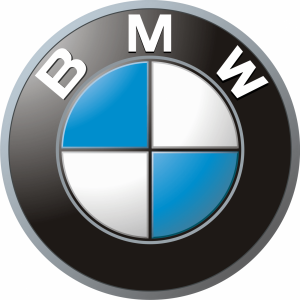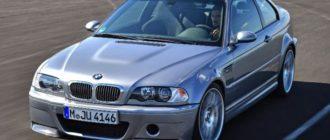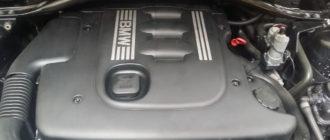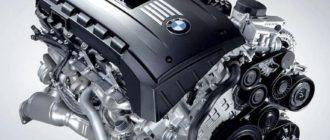In this article, we elucidate the intricate model codes of BMW. What do «LCI» and E46 mean? How widespread is BMW's coding system? So much so that by entering the phrase «5 Series 2003—2010» on a popular auction portal in the parts section, we get 90 views, and when entering the code «E60» you will see ... 70 thousand listings.
There is no better way to distinguish between generations that are not differentiated by trade names — for example, 520i can refer to four completely different cars, and only the factory code indicates whether the model is new or produced a quarter of a century ago.
The confusion is exacerbated by the fact that BMW recently began using different code markings for individual body versions, which was not the case before 2005.
In the case of BMW, the letters «LCI» are often encountered when identifying a model.
This stands for «Life Cycle Impulse,» which translates colloquially.
BMW 1 Series Labeling
E81-E87
Year of manufacture: 2004—2011
Facelift: 2007
Engines: 1.6-3.0, 115-340 hp
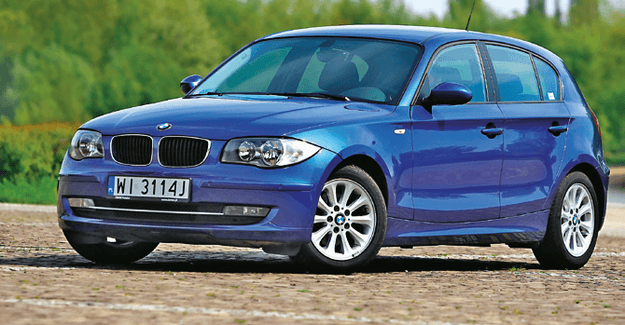
One of the most ambiguously marked models. The 3-door 1 Series is the E81. The 5-door: E87. 2-door: E82. Convertible: E88. Note: versions E82 and E88 were produced until 2013 in parallel with F20.
F20-F21
In production: since 2011
Facelift: none
Engines: 1.5-3.0, 95-340 hp
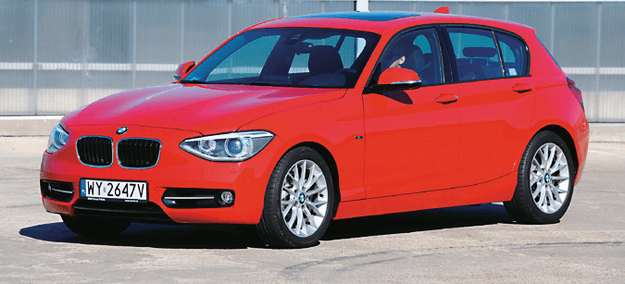
The current 1 Series has received 3-cylinder turbocharged engines — its predecessor only had even-cylinder units. F20 denotes the 5-door variant, while F21 is the 3-door.
BMW 3 Series
E36
Years of production: 1990—1999, Facelift: 1993, Engines 1996: 1.6-3.2, 90-321 hp
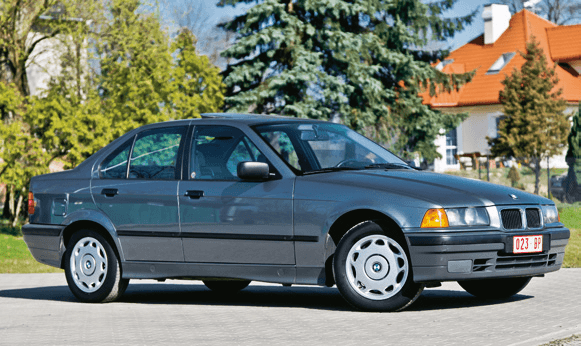
E36 — the third generation of the 3 Series (preceded by E21 and E30), but the first available in five body styles. Additional numbers are sometimes used to indicate the number of doors to distinguish them, for example, E36/4 — sedan, E36/2 — coupe (2C — convertible) and so on. The touring model was only introduced in 1995, a year after the compact.
E46
Year of production: 1998—2007, Facelift: 2001, Engines: 1.8-3.0, 105-360 hp
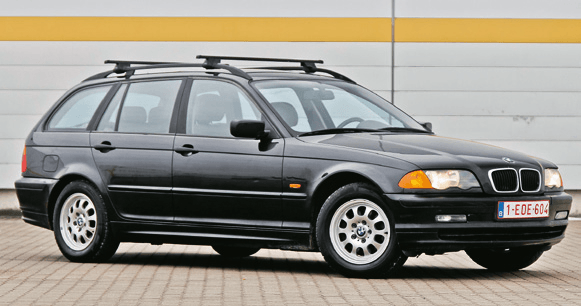
Like the E36, the E46 also has up to five body styles, but all with the same designation. These include sedan, touring, coupe, convertible, and 3-door compact. The E46 was the most popular BMW model in Poland for many years. Note: after the 2001 facelift, the shape of the headlights changed, and the Common Rail diesel was introduced.
E90-E93
E65-E66
Years of production: 2001—2008, Facelift: 2005, Engines: 3.0-6.0, 218-445 hp
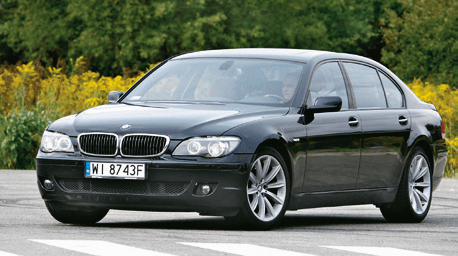
The last 7 Series with the typical BMW, sleek design. Engines: inline 6, V8, and of course V12. This model was driven by a former president, hence this generation is sometimes called «Kwasniewski's.» The E38 Series is considerably simpler and more «mechanical» compared to its successor with more electronics.
E65-E66
Years of production: 2001—2008, Facelift: 2005, Engines: 3.0-6.0, 218-445 hp
























The last 7 Series with the typical BMW, sleek design. Engines: inline 6, V8, and of course V12. This model was driven by a former president, hence this generation is sometimes called «Kwasniewski's.» The E38 Series is considerably simpler and more «mechanical» compared to its successor with more electronics.
E65-E66
Years of production: 2001—2008, Facelift: 2005, Engines: 3.0-6.0, 218-445 hp
























E38
Years of production: 1994—2001, Facelift: 1998, Engines: 2.5-5.4, 143-326 hp
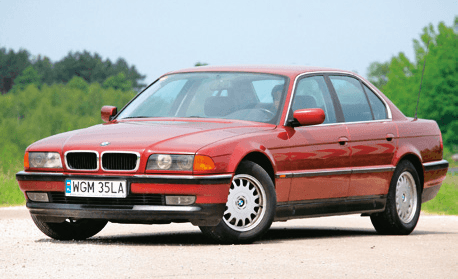




















The last 7 Series with the typical BMW, sleek design. Engines: inline 6, V8, and of course V12. This model was driven by a former president, hence this generation is sometimes called «Kwasniewski's.» The E38 Series is considerably simpler and more «mechanical» compared to its successor with more electronics.
E65-E66
Years of production: 2001—2008, Facelift: 2005, Engines: 3.0-6.0, 218-445 hp
























E32 is the second generation of the 7 Series. The first was called E23. It gained fame for using a V12 engine: no other German manufacturer offered such a version at the time of its debut. Some engines did without diesel, and a 4×4 version was not available. A classic with true character.
E38
Years of production: 1994—2001, Facelift: 1998, Engines: 2.5-5.4, 143-326 hp





















The last 7 Series with the typical BMW, sleek design. Engines: inline 6, V8, and of course V12. This model was driven by a former president, hence this generation is sometimes called «Kwasniewski's.» The E38 Series is considerably simpler and more «mechanical» compared to its successor with more electronics.
E65-E66
Years of production: 2001—2008, Facelift: 2005, Engines: 3.0-6.0, 218-445 hp
























E32 is the second generation of the 7 Series. The first was called E23. It gained fame for using a V12 engine: no other German manufacturer offered such a version at the time of its debut. Some engines did without diesel, and a 4×4 version was not available. A classic with true character.
E38
Years of production: 1994—2001, Facelift: 1998, Engines: 2.5-5.4, 143-326 hp





















The last 7 Series with the typical BMW, sleek design. Engines: inline 6, V8, and of course V12. This model was driven by a former president, hence this generation is sometimes called «Kwasniewski's.» The E38 Series is considerably simpler and more «mechanical» compared to its successor with more electronics.
E65-E66
Years of production: 2001—2008, Facelift: 2005, Engines: 3.0-6.0, 218-445 hp
























E32
Years of production: 1986—1994, Facelift: 1992, Engines: 3.0-5.0, 188-300 hp
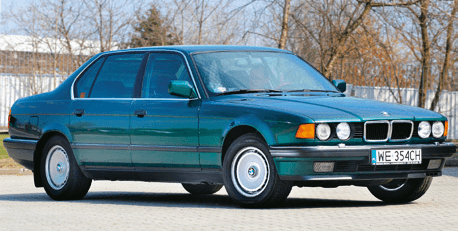

















E32 is the second generation of the 7 Series. The first was called E23. It gained fame for using a V12 engine: no other German manufacturer offered such a version at the time of its debut. Some engines did without diesel, and a 4×4 version was not available. A classic with true character.
E38
Years of production: 1994—2001, Facelift: 1998, Engines: 2.5-5.4, 143-326 hp





















The last 7 Series with the typical BMW, sleek design. Engines: inline 6, V8, and of course V12. This model was driven by a former president, hence this generation is sometimes called «Kwasniewski's.» The E38 Series is considerably simpler and more «mechanical» compared to its successor with more electronics.
E65-E66
Years of production: 2001—2008, Facelift: 2005, Engines: 3.0-6.0, 218-445 hp
























E32
Years of production: 1986—1994, Facelift: 1992, Engines: 3.0-5.0, 188-300 hp


















E32 is the second generation of the 7 Series. The first was called E23. It gained fame for using a V12 engine: no other German manufacturer offered such a version at the time of its debut. Some engines did without diesel, and a 4×4 version was not available. A classic with true character.
E38
Years of production: 1994—2001, Facelift: 1998, Engines: 2.5-5.4, 143-326 hp





















The last 7 Series with the typical BMW, sleek design. Engines: inline 6, V8, and of course V12. This model was driven by a former president, hence this generation is sometimes called «Kwasniewski's.» The E38 Series is considerably simpler and more «mechanical» compared to its successor with more electronics.
E65-E66
Years of production: 2001—2008, Facelift: 2005, Engines: 3.0-6.0, 218-445 hp
























F10 denotes a sedan, while F11 is the touring variant. There is also an extended version F18 in China. BMW offers an extremely wide range of powertrains in this model: 4, 6, or 8 cylinders, naturally aspirated engines, turbo, bi-turbo, and tri-turbo, manual or automatic transmission, rear-wheel or 4×4 drive. The 5 Series will soon become the successor to the G30 model.
BMW 7 Series
E32
Years of production: 1986—1994, Facelift: 1992, Engines: 3.0-5.0, 188-300 hp


















E32 is the second generation of the 7 Series. The first was called E23. It gained fame for using a V12 engine: no other German manufacturer offered such a version at the time of its debut. Some engines did without diesel, and a 4×4 version was not available. A classic with true character.
E38
Years of production: 1994—2001, Facelift: 1998, Engines: 2.5-5.4, 143-326 hp





















The last 7 Series with the typical BMW, sleek design. Engines: inline 6, V8, and of course V12. This model was driven by a former president, hence this generation is sometimes called «Kwasniewski's.» The E38 Series is considerably simpler and more «mechanical» compared to its successor with more electronics.
E65-E66
Years of production: 2001—2008, Facelift: 2005, Engines: 3.0-6.0, 218-445 hp
























F10-F11
In production: since 2010, Facelift: 2013, Engines: 2.0-4.4, 143-575 hp
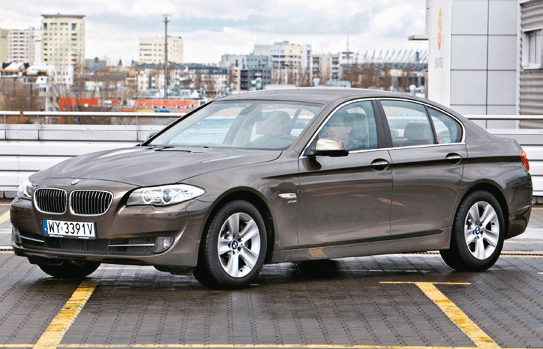














F10 denotes a sedan, while F11 is the touring variant. There is also an extended version F18 in China. BMW offers an extremely wide range of powertrains in this model: 4, 6, or 8 cylinders, naturally aspirated engines, turbo, bi-turbo, and tri-turbo, manual or automatic transmission, rear-wheel or 4×4 drive. The 5 Series will soon become the successor to the G30 model.
BMW 7 Series
E32
Years of production: 1986—1994, Facelift: 1992, Engines: 3.0-5.0, 188-300 hp


















E32 is the second generation of the 7 Series. The first was called E23. It gained fame for using a V12 engine: no other German manufacturer offered such a version at the time of its debut. Some engines did without diesel, and a 4×4 version was not available. A classic with true character.
E38
Years of production: 1994—2001, Facelift: 1998, Engines: 2.5-5.4, 143-326 hp





















The last 7 Series with the typical BMW, sleek design. Engines: inline 6, V8, and of course V12. This model was driven by a former president, hence this generation is sometimes called «Kwasniewski's.» The E38 Series is considerably simpler and more «mechanical» compared to its successor with more electronics.
E65-E66
Years of production: 2001—2008, Facelift: 2005, Engines: 3.0-6.0, 218-445 hp
























Read more of our BMW reviews.
F10-F11
In production: since 2010, Facelift: 2013, Engines: 2.0-4.4, 143-575 hp















F10 denotes a sedan, while F11 is the touring variant. There is also an extended version F18 in China. BMW offers an extremely wide range of powertrains in this model: 4, 6, or 8 cylinders, naturally aspirated engines, turbo, bi-turbo, and tri-turbo, manual or automatic transmission, rear-wheel or 4×4 drive. The 5 Series will soon become the successor to the G30 model.
BMW 7 Series
E32
Years of production: 1986—1994, Facelift: 1992, Engines: 3.0-5.0, 188-300 hp


















E32 is the second generation of the 7 Series. The first was called E23. It gained fame for using a V12 engine: no other German manufacturer offered such a version at the time of its debut. Some engines did without diesel, and a 4×4 version was not available. A classic with true character.
E38
Years of production: 1994—2001, Facelift: 1998, Engines: 2.5-5.4, 143-326 hp





















The last 7 Series with the typical BMW, sleek design. Engines: inline 6, V8, and of course V12. This model was driven by a former president, hence this generation is sometimes called «Kwasniewski's.» The E38 Series is considerably simpler and more «mechanical» compared to its successor with more electronics.
E65-E66
Years of production: 2001—2008, Facelift: 2005, Engines: 3.0-6.0, 218-445 hp
























In this model, differentiation was first made for the sedan (E60) and touring (E61) designations. The 2007 facelift was not significant in terms of aesthetics, but it introduced new engine families — not always reliable.
Read more of our BMW reviews.
F10-F11
In production: since 2010, Facelift: 2013, Engines: 2.0-4.4, 143-575 hp















F10 denotes a sedan, while F11 is the touring variant. There is also an extended version F18 in China. BMW offers an extremely wide range of powertrains in this model: 4, 6, or 8 cylinders, naturally aspirated engines, turbo, bi-turbo, and tri-turbo, manual or automatic transmission, rear-wheel or 4×4 drive. The 5 Series will soon become the successor to the G30 model.
BMW 7 Series
E32
Years of production: 1986—1994, Facelift: 1992, Engines: 3.0-5.0, 188-300 hp


















E32 is the second generation of the 7 Series. The first was called E23. It gained fame for using a V12 engine: no other German manufacturer offered such a version at the time of its debut. Some engines did without diesel, and a 4×4 version was not available. A classic with true character.
E38
Years of production: 1994—2001, Facelift: 1998, Engines: 2.5-5.4, 143-326 hp





















The last 7 Series with the typical BMW, sleek design. Engines: inline 6, V8, and of course V12. This model was driven by a former president, hence this generation is sometimes called «Kwasniewski's.» The E38 Series is considerably simpler and more «mechanical» compared to its successor with more electronics.
E65-E66
Years of production: 2001—2008, Facelift: 2005, Engines: 3.0-6.0, 218-445 hp
























In this model, differentiation was first made for the sedan (E60) and touring (E61) designations. The 2007 facelift was not significant in terms of aesthetics, but it introduced new engine families — not always reliable.
Read more of our BMW reviews.
F10-F11
In production: since 2010, Facelift: 2013, Engines: 2.0-4.4, 143-575 hp















F10 denotes a sedan, while F11 is the touring variant. There is also an extended version F18 in China. BMW offers an extremely wide range of powertrains in this model: 4, 6, or 8 cylinders, naturally aspirated engines, turbo, bi-turbo, and tri-turbo, manual or automatic transmission, rear-wheel or 4×4 drive. The 5 Series will soon become the successor to the G30 model.
BMW 7 Series
E32
Years of production: 1986—1994, Facelift: 1992, Engines: 3.0-5.0, 188-300 hp


















E32 is the second generation of the 7 Series. The first was called E23. It gained fame for using a V12 engine: no other German manufacturer offered such a version at the time of its debut. Some engines did without diesel, and a 4×4 version was not available. A classic with true character.
E38
Years of production: 1994—2001, Facelift: 1998, Engines: 2.5-5.4, 143-326 hp





















The last 7 Series with the typical BMW, sleek design. Engines: inline 6, V8, and of course V12. This model was driven by a former president, hence this generation is sometimes called «Kwasniewski's.» The E38 Series is considerably simpler and more «mechanical» compared to its successor with more electronics.
E65-E66
Years of production: 2001—2008, Facelift: 2005, Engines: 3.0-6.0, 218-445 hp
























E60-E61
Years of production: 2003—2010, Facelift: 2007, Engines: 2.0-5.0, 163-507 hp
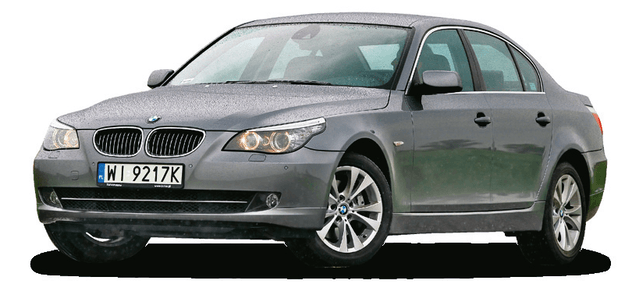










In this model, differentiation was first made for the sedan (E60) and touring (E61) designations. The 2007 facelift was not significant in terms of aesthetics, but it introduced new engine families — not always reliable.
Read more of our BMW reviews.
F10-F11
In production: since 2010, Facelift: 2013, Engines: 2.0-4.4, 143-575 hp















F10 denotes a sedan, while F11 is the touring variant. There is also an extended version F18 in China. BMW offers an extremely wide range of powertrains in this model: 4, 6, or 8 cylinders, naturally aspirated engines, turbo, bi-turbo, and tri-turbo, manual or automatic transmission, rear-wheel or 4×4 drive. The 5 Series will soon become the successor to the G30 model.
BMW 7 Series
E32
Years of production: 1986—1994, Facelift: 1992, Engines: 3.0-5.0, 188-300 hp


















E32 is the second generation of the 7 Series. The first was called E23. It gained fame for using a V12 engine: no other German manufacturer offered such a version at the time of its debut. Some engines did without diesel, and a 4×4 version was not available. A classic with true character.
E38
Years of production: 1994—2001, Facelift: 1998, Engines: 2.5-5.4, 143-326 hp





















The last 7 Series with the typical BMW, sleek design. Engines: inline 6, V8, and of course V12. This model was driven by a former president, hence this generation is sometimes called «Kwasniewski's.» The E38 Series is considerably simpler and more «mechanical» compared to its successor with more electronics.
E65-E66
Years of production: 2001—2008, Facelift: 2005, Engines: 3.0-6.0, 218-445 hp
























It would not be an exaggeration to call the E39 the best BMW of the 1990s. The 2000 facelift was associated with very minor changes, more significant ones occurred earlier — in 1998 when an outstanding diesel engine was introduced. A 2.9-liter capacity from the M57 family. This model was named the 530d and still remains the most sought-after version of the E39. Body versions include sedan and touring.
E60-E61
Years of production: 2003—2010, Facelift: 2007, Engines: 2.0-5.0, 163-507 hp











In this model, differentiation was first made for the sedan (E60) and touring (E61) designations. The 2007 facelift was not significant in terms of aesthetics, but it introduced new engine families — not always reliable.
Read more of our BMW reviews.
F10-F11
In production: since 2010, Facelift: 2013, Engines: 2.0-4.4, 143-575 hp















F10 denotes a sedan, while F11 is the touring variant. There is also an extended version F18 in China. BMW offers an extremely wide range of powertrains in this model: 4, 6, or 8 cylinders, naturally aspirated engines, turbo, bi-turbo, and tri-turbo, manual or automatic transmission, rear-wheel or 4×4 drive. The 5 Series will soon become the successor to the G30 model.
BMW 7 Series
E32
Years of production: 1986—1994, Facelift: 1992, Engines: 3.0-5.0, 188-300 hp


















E32 is the second generation of the 7 Series. The first was called E23. It gained fame for using a V12 engine: no other German manufacturer offered such a version at the time of its debut. Some engines did without diesel, and a 4×4 version was not available. A classic with true character.
E38
Years of production: 1994—2001, Facelift: 1998, Engines: 2.5-5.4, 143-326 hp





















The last 7 Series with the typical BMW, sleek design. Engines: inline 6, V8, and of course V12. This model was driven by a former president, hence this generation is sometimes called «Kwasniewski's.» The E38 Series is considerably simpler and more «mechanical» compared to its successor with more electronics.
E65-E66
Years of production: 2001—2008, Facelift: 2005, Engines: 3.0-6.0, 218-445 hp
























It would not be an exaggeration to call the E39 the best BMW of the 1990s. The 2000 facelift was associated with very minor changes, more significant ones occurred earlier — in 1998 when an outstanding diesel engine was introduced. A 2.9-liter capacity from the M57 family. This model was named the 530d and still remains the most sought-after version of the E39. Body versions include sedan and touring.
E60-E61
Years of production: 2003—2010, Facelift: 2007, Engines: 2.0-5.0, 163-507 hp











In this model, differentiation was first made for the sedan (E60) and touring (E61) designations. The 2007 facelift was not significant in terms of aesthetics, but it introduced new engine families — not always reliable.
Read more of our BMW reviews.
F10-F11
In production: since 2010, Facelift: 2013, Engines: 2.0-4.4, 143-575 hp















F10 denotes a sedan, while F11 is the touring variant. There is also an extended version F18 in China. BMW offers an extremely wide range of powertrains in this model: 4, 6, or 8 cylinders, naturally aspirated engines, turbo, bi-turbo, and tri-turbo, manual or automatic transmission, rear-wheel or 4×4 drive. The 5 Series will soon become the successor to the G30 model.
BMW 7 Series
E32
Years of production: 1986—1994, Facelift: 1992, Engines: 3.0-5.0, 188-300 hp


















E32 is the second generation of the 7 Series. The first was called E23. It gained fame for using a V12 engine: no other German manufacturer offered such a version at the time of its debut. Some engines did without diesel, and a 4×4 version was not available. A classic with true character.
E38
Years of production: 1994—2001, Facelift: 1998, Engines: 2.5-5.4, 143-326 hp





















The last 7 Series with the typical BMW, sleek design. Engines: inline 6, V8, and of course V12. This model was driven by a former president, hence this generation is sometimes called «Kwasniewski's.» The E38 Series is considerably simpler and more «mechanical» compared to its successor with more electronics.
E65-E66
Years of production: 2001—2008, Facelift: 2005, Engines: 3.0-6.0, 218-445 hp
























E39
Years of production: 1995—2004, Facelift: 2000, Engines: 2.0-5.0, 115-400 hp
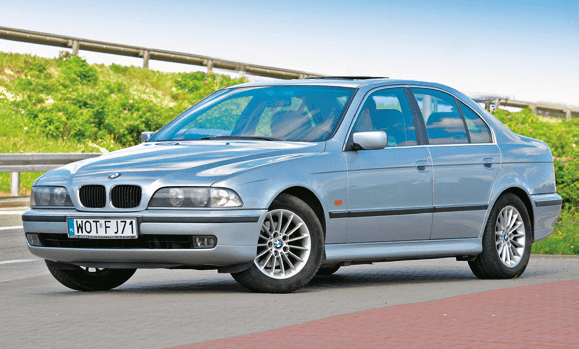







It would not be an exaggeration to call the E39 the best BMW of the 1990s. The 2000 facelift was associated with very minor changes, more significant ones occurred earlier — in 1998 when an outstanding diesel engine was introduced. A 2.9-liter capacity from the M57 family. This model was named the 530d and still remains the most sought-after version of the E39. Body versions include sedan and touring.
E60-E61
Years of production: 2003—2010, Facelift: 2007, Engines: 2.0-5.0, 163-507 hp











In this model, differentiation was first made for the sedan (E60) and touring (E61) designations. The 2007 facelift was not significant in terms of aesthetics, but it introduced new engine families — not always reliable.
Read more of our BMW reviews.
F10-F11
In production: since 2010, Facelift: 2013, Engines: 2.0-4.4, 143-575 hp















F10 denotes a sedan, while F11 is the touring variant. There is also an extended version F18 in China. BMW offers an extremely wide range of powertrains in this model: 4, 6, or 8 cylinders, naturally aspirated engines, turbo, bi-turbo, and tri-turbo, manual or automatic transmission, rear-wheel or 4×4 drive. The 5 Series will soon become the successor to the G30 model.
BMW 7 Series
E32
Years of production: 1986—1994, Facelift: 1992, Engines: 3.0-5.0, 188-300 hp


















E32 is the second generation of the 7 Series. The first was called E23. It gained fame for using a V12 engine: no other German manufacturer offered such a version at the time of its debut. Some engines did without diesel, and a 4×4 version was not available. A classic with true character.
E38
Years of production: 1994—2001, Facelift: 1998, Engines: 2.5-5.4, 143-326 hp





















The last 7 Series with the typical BMW, sleek design. Engines: inline 6, V8, and of course V12. This model was driven by a former president, hence this generation is sometimes called «Kwasniewski's.» The E38 Series is considerably simpler and more «mechanical» compared to its successor with more electronics.
E65-E66
Years of production: 2001—2008, Facelift: 2005, Engines: 3.0-6.0, 218-445 hp
























E34 — the third generation of the 5 Series. It was preceded by models E12 and E28. Like the E36, additional body style codes with the number of doors are sometimes used for seller convenience, namely E34/4 — sedan, E34/5 — touring, which joined the lineup in 1991. There was even a model with all-wheel drive, marked as 525iX (2.5 gasoline).
E39
Years of production: 1995—2004, Facelift: 2000, Engines: 2.0-5.0, 115-400 hp








It would not be an exaggeration to call the E39 the best BMW of the 1990s. The 2000 facelift was associated with very minor changes, more significant ones occurred earlier — in 1998 when an outstanding diesel engine was introduced. A 2.9-liter capacity from the M57 family. This model was named the 530d and still remains the most sought-after version of the E39. Body versions include sedan and touring.
E60-E61
Years of production: 2003—2010, Facelift: 2007, Engines: 2.0-5.0, 163-507 hp











In this model, differentiation was first made for the sedan (E60) and touring (E61) designations. The 2007 facelift was not significant in terms of aesthetics, but it introduced new engine families — not always reliable.
Read more of our BMW reviews.
F10-F11
In production: since 2010, Facelift: 2013, Engines: 2.0-4.4, 143-575 hp















F10 denotes a sedan, while F11 is the touring variant. There is also an extended version F18 in China. BMW offers an extremely wide range of powertrains in this model: 4, 6, or 8 cylinders, naturally aspirated engines, turbo, bi-turbo, and tri-turbo, manual or automatic transmission, rear-wheel or 4×4 drive. The 5 Series will soon become the successor to the G30 model.
BMW 7 Series
E32
Years of production: 1986—1994, Facelift: 1992, Engines: 3.0-5.0, 188-300 hp


















E32 is the second generation of the 7 Series. The first was called E23. It gained fame for using a V12 engine: no other German manufacturer offered such a version at the time of its debut. Some engines did without diesel, and a 4×4 version was not available. A classic with true character.
E38
Years of production: 1994—2001, Facelift: 1998, Engines: 2.5-5.4, 143-326 hp





















The last 7 Series with the typical BMW, sleek design. Engines: inline 6, V8, and of course V12. This model was driven by a former president, hence this generation is sometimes called «Kwasniewski's.» The E38 Series is considerably simpler and more «mechanical» compared to its successor with more electronics.
E65-E66
Years of production: 2001—2008, Facelift: 2005, Engines: 3.0-6.0, 218-445 hp
























E34 — the third generation of the 5 Series. It was preceded by models E12 and E28. Like the E36, additional body style codes with the number of doors are sometimes used for seller convenience, namely E34/4 — sedan, E34/5 — touring, which joined the lineup in 1991. There was even a model with all-wheel drive, marked as 525iX (2.5 gasoline).
E39
Years of production: 1995—2004, Facelift: 2000, Engines: 2.0-5.0, 115-400 hp








It would not be an exaggeration to call the E39 the best BMW of the 1990s. The 2000 facelift was associated with very minor changes, more significant ones occurred earlier — in 1998 when an outstanding diesel engine was introduced. A 2.9-liter capacity from the M57 family. This model was named the 530d and still remains the most sought-after version of the E39. Body versions include sedan and touring.
E60-E61
Years of production: 2003—2010, Facelift: 2007, Engines: 2.0-5.0, 163-507 hp











In this model, differentiation was first made for the sedan (E60) and touring (E61) designations. The 2007 facelift was not significant in terms of aesthetics, but it introduced new engine families — not always reliable.
Read more of our BMW reviews.
F10-F11
In production: since 2010, Facelift: 2013, Engines: 2.0-4.4, 143-575 hp















F10 denotes a sedan, while F11 is the touring variant. There is also an extended version F18 in China. BMW offers an extremely wide range of powertrains in this model: 4, 6, or 8 cylinders, naturally aspirated engines, turbo, bi-turbo, and tri-turbo, manual or automatic transmission, rear-wheel or 4×4 drive. The 5 Series will soon become the successor to the G30 model.
BMW 7 Series
E32
Years of production: 1986—1994, Facelift: 1992, Engines: 3.0-5.0, 188-300 hp


















E32 is the second generation of the 7 Series. The first was called E23. It gained fame for using a V12 engine: no other German manufacturer offered such a version at the time of its debut. Some engines did without diesel, and a 4×4 version was not available. A classic with true character.
E38
Years of production: 1994—2001, Facelift: 1998, Engines: 2.5-5.4, 143-326 hp





















The last 7 Series with the typical BMW, sleek design. Engines: inline 6, V8, and of course V12. This model was driven by a former president, hence this generation is sometimes called «Kwasniewski's.» The E38 Series is considerably simpler and more «mechanical» compared to its successor with more electronics.
E65-E66
Years of production: 2001—2008, Facelift: 2005, Engines: 3.0-6.0, 218-445 hp
























F30-F34
In production: since 2012, Facelift: none, Engines: 1.5-3.0, 116-326 hp
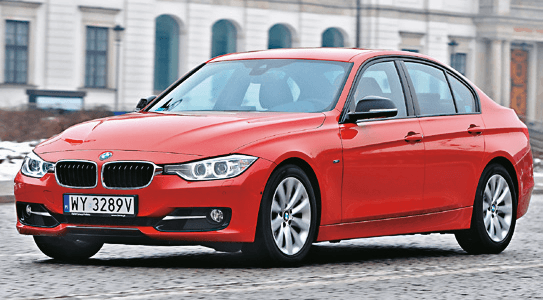




The 3 Series is now reduced to three body versions: sedan F30, liftback GT — F34, and touring — F31. To complicate matters, coupe and convertible now belong to the 4 Series (F32 and F33 respectively), but the lineup also includes the 5-door Gran Coupe: type F36.
All cars share the same platform and engines — from 3-cylinder to 6-cylinder.
BMW 5 Series Labeling
E34
Years of production: 1987—1996, Engines 1991: 1.8-4.0, 115-340 hp
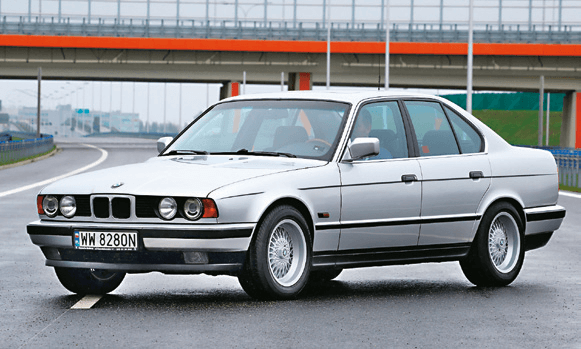




E34 — the third generation of the 5 Series. It was preceded by models E12 and E28. Like the E36, additional body style codes with the number of doors are sometimes used for seller convenience, namely E34/4 — sedan, E34/5 — touring, which joined the lineup in 1991. There was even a model with all-wheel drive, marked as 525iX (2.5 gasoline).
E39
Years of production: 1995—2004, Facelift: 2000, Engines: 2.0-5.0, 115-400 hp








It would not be an exaggeration to call the E39 the best BMW of the 1990s. The 2000 facelift was associated with very minor changes, more significant ones occurred earlier — in 1998 when an outstanding diesel engine was introduced. A 2.9-liter capacity from the M57 family. This model was named the 530d and still remains the most sought-after version of the E39. Body versions include sedan and touring.
E60-E61
Years of production: 2003—2010, Facelift: 2007, Engines: 2.0-5.0, 163-507 hp











In this model, differentiation was first made for the sedan (E60) and touring (E61) designations. The 2007 facelift was not significant in terms of aesthetics, but it introduced new engine families — not always reliable.
Read more of our BMW reviews.
F10-F11
In production: since 2010, Facelift: 2013, Engines: 2.0-4.4, 143-575 hp















F10 denotes a sedan, while F11 is the touring variant. There is also an extended version F18 in China. BMW offers an extremely wide range of powertrains in this model: 4, 6, or 8 cylinders, naturally aspirated engines, turbo, bi-turbo, and tri-turbo, manual or automatic transmission, rear-wheel or 4×4 drive. The 5 Series will soon become the successor to the G30 model.
BMW 7 Series
E32
Years of production: 1986—1994, Facelift: 1992, Engines: 3.0-5.0, 188-300 hp


















E32 is the second generation of the 7 Series. The first was called E23. It gained fame for using a V12 engine: no other German manufacturer offered such a version at the time of its debut. Some engines did without diesel, and a 4×4 version was not available. A classic with true character.
E38
Years of production: 1994—2001, Facelift: 1998, Engines: 2.5-5.4, 143-326 hp





















The last 7 Series with the typical BMW, sleek design. Engines: inline 6, V8, and of course V12. This model was driven by a former president, hence this generation is sometimes called «Kwasniewski's.» The E38 Series is considerably simpler and more «mechanical» compared to its successor with more electronics.
E65-E66
Years of production: 2001—2008, Facelift: 2005, Engines: 3.0-6.0, 218-445 hp
























The last 3 Series with a designation starting with the letter «E» is also the first where the factory code varied depending on the body style. Breakthrough: E90 — sedan, E91 — touring, E92 — coupe, and E93 — convertible.
F30-F34
In production: since 2012, Facelift: none, Engines: 1.5-3.0, 116-326 hp





The 3 Series is now reduced to three body versions: sedan F30, liftback GT — F34, and touring — F31. To complicate matters, coupe and convertible now belong to the 4 Series (F32 and F33 respectively), but the lineup also includes the 5-door Gran Coupe: type F36.
All cars share the same platform and engines — from 3-cylinder to 6-cylinder.
BMW 5 Series Labeling
E34
Years of production: 1987—1996, Engines 1991: 1.8-4.0, 115-340 hp





E34 — the third generation of the 5 Series. It was preceded by models E12 and E28. Like the E36, additional body style codes with the number of doors are sometimes used for seller convenience, namely E34/4 — sedan, E34/5 — touring, which joined the lineup in 1991. There was even a model with all-wheel drive, marked as 525iX (2.5 gasoline).
E39
Years of production: 1995—2004, Facelift: 2000, Engines: 2.0-5.0, 115-400 hp








It would not be an exaggeration to call the E39 the best BMW of the 1990s. The 2000 facelift was associated with very minor changes, more significant ones occurred earlier — in 1998 when an outstanding diesel engine was introduced. A 2.9-liter capacity from the M57 family. This model was named the 530d and still remains the most sought-after version of the E39. Body versions include sedan and touring.
E60-E61
Years of production: 2003—2010, Facelift: 2007, Engines: 2.0-5.0, 163-507 hp











In this model, differentiation was first made for the sedan (E60) and touring (E61) designations. The 2007 facelift was not significant in terms of aesthetics, but it introduced new engine families — not always reliable.
Read more of our BMW reviews.
F10-F11
In production: since 2010, Facelift: 2013, Engines: 2.0-4.4, 143-575 hp















F10 denotes a sedan, while F11 is the touring variant. There is also an extended version F18 in China. BMW offers an extremely wide range of powertrains in this model: 4, 6, or 8 cylinders, naturally aspirated engines, turbo, bi-turbo, and tri-turbo, manual or automatic transmission, rear-wheel or 4×4 drive. The 5 Series will soon become the successor to the G30 model.
BMW 7 Series
E32
Years of production: 1986—1994, Facelift: 1992, Engines: 3.0-5.0, 188-300 hp


















E32 is the second generation of the 7 Series. The first was called E23. It gained fame for using a V12 engine: no other German manufacturer offered such a version at the time of its debut. Some engines did without diesel, and a 4×4 version was not available. A classic with true character.
E38
Years of production: 1994—2001, Facelift: 1998, Engines: 2.5-5.4, 143-326 hp





















The last 7 Series with the typical BMW, sleek design. Engines: inline 6, V8, and of course V12. This model was driven by a former president, hence this generation is sometimes called «Kwasniewski's.» The E38 Series is considerably simpler and more «mechanical» compared to its successor with more electronics.
E65-E66
Years of production: 2001—2008, Facelift: 2005, Engines: 3.0-6.0, 218-445 hp
























The last 3 Series with a designation starting with the letter «E» is also the first where the factory code varied depending on the body style. Breakthrough: E90 — sedan, E91 — touring, E92 — coupe, and E93 — convertible.
F30-F34
In production: since 2012, Facelift: none, Engines: 1.5-3.0, 116-326 hp





The 3 Series is now reduced to three body versions: sedan F30, liftback GT — F34, and touring — F31. To complicate matters, coupe and convertible now belong to the 4 Series (F32 and F33 respectively), but the lineup also includes the 5-door Gran Coupe: type F36.
All cars share the same platform and engines — from 3-cylinder to 6-cylinder.
BMW 5 Series Labeling
E34
Years of production: 1987—1996, Engines 1991: 1.8-4.0, 115-340 hp





E34 — the third generation of the 5 Series. It was preceded by models E12 and E28. Like the E36, additional body style codes with the number of doors are sometimes used for seller convenience, namely E34/4 — sedan, E34/5 — touring, which joined the lineup in 1991. There was even a model with all-wheel drive, marked as 525iX (2.5 gasoline).
E39
Years of production: 1995—2004, Facelift: 2000, Engines: 2.0-5.0, 115-400 hp








It would not be an exaggeration to call the E39 the best BMW of the 1990s. The 2000 facelift was associated with very minor changes, more significant ones occurred earlier — in 1998 when an outstanding diesel engine was introduced. A 2.9-liter capacity from the M57 family. This model was named the 530d and still remains the most sought-after version of the E39. Body versions include sedan and touring.
E60-E61
Years of production: 2003—2010, Facelift: 2007, Engines: 2.0-5.0, 163-507 hp











In this model, differentiation was first made for the sedan (E60) and touring (E61) designations. The 2007 facelift was not significant in terms of aesthetics, but it introduced new engine families — not always reliable.
Read more of our BMW reviews.
F10-F11
In production: since 2010, Facelift: 2013, Engines: 2.0-4.4, 143-575 hp















F10 denotes a sedan, while F11 is the touring variant. There is also an extended version F18 in China. BMW offers an extremely wide range of powertrains in this model: 4, 6, or 8 cylinders, naturally aspirated engines, turbo, bi-turbo, and tri-turbo, manual or automatic transmission, rear-wheel or 4×4 drive. The 5 Series will soon become the successor to the G30 model.
BMW 7 Series
E32
Years of production: 1986—1994, Facelift: 1992, Engines: 3.0-5.0, 188-300 hp


















E32 is the second generation of the 7 Series. The first was called E23. It gained fame for using a V12 engine: no other German manufacturer offered such a version at the time of its debut. Some engines did without diesel, and a 4×4 version was not available. A classic with true character.
E38
Years of production: 1994—2001, Facelift: 1998, Engines: 2.5-5.4, 143-326 hp





















The last 7 Series with the typical BMW, sleek design. Engines: inline 6, V8, and of course V12. This model was driven by a former president, hence this generation is sometimes called «Kwasniewski's.» The E38 Series is considerably simpler and more «mechanical» compared to its successor with more electronics.
E65-E66
Years of production: 2001—2008, Facelift: 2005, Engines: 3.0-6.0, 218-445 hp
























Year of production: 2005-12, Facelift: 2008, Engines: 1.6-4.0, 116-420 hp
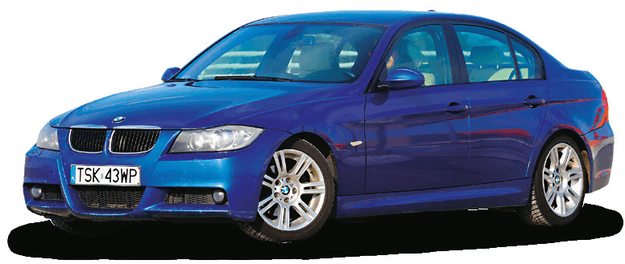

The last 3 Series with a designation starting with the letter «E» is also the first where the factory code varied depending on the body style. Breakthrough: E90 — sedan, E91 — touring, E92 — coupe, and E93 — convertible.
F30-F34
In production: since 2012, Facelift: none, Engines: 1.5-3.0, 116-326 hp





The 3 Series is now reduced to three body versions: sedan F30, liftback GT — F34, and touring — F31. To complicate matters, coupe and convertible now belong to the 4 Series (F32 and F33 respectively), but the lineup also includes the 5-door Gran Coupe: type F36.
All cars share the same platform and engines — from 3-cylinder to 6-cylinder.
BMW 5 Series Labeling
E34
Years of production: 1987—1996, Engines 1991: 1.8-4.0, 115-340 hp





E34 — the third generation of the 5 Series. It was preceded by models E12 and E28. Like the E36, additional body style codes with the number of doors are sometimes used for seller convenience, namely E34/4 — sedan, E34/5 — touring, which joined the lineup in 1991. There was even a model with all-wheel drive, marked as 525iX (2.5 gasoline).
E39
Years of production: 1995—2004, Facelift: 2000, Engines: 2.0-5.0, 115-400 hp








It would not be an exaggeration to call the E39 the best BMW of the 1990s. The 2000 facelift was associated with very minor changes, more significant ones occurred earlier — in 1998 when an outstanding diesel engine was introduced. A 2.9-liter capacity from the M57 family. This model was named the 530d and still remains the most sought-after version of the E39. Body versions include sedan and touring.
E60-E61
Years of production: 2003—2010, Facelift: 2007, Engines: 2.0-5.0, 163-507 hp











In this model, differentiation was first made for the sedan (E60) and touring (E61) designations. The 2007 facelift was not significant in terms of aesthetics, but it introduced new engine families — not always reliable.
Read more of our BMW reviews.
F10-F11
In production: since 2010, Facelift: 2013, Engines: 2.0-4.4, 143-575 hp















F10 denotes a sedan, while F11 is the touring variant. There is also an extended version F18 in China. BMW offers an extremely wide range of powertrains in this model: 4, 6, or 8 cylinders, naturally aspirated engines, turbo, bi-turbo, and tri-turbo, manual or automatic transmission, rear-wheel or 4×4 drive. The 5 Series will soon become the successor to the G30 model.
BMW 7 Series
E32
Years of production: 1986—1994, Facelift: 1992, Engines: 3.0-5.0, 188-300 hp


















E32 is the second generation of the 7 Series. The first was called E23. It gained fame for using a V12 engine: no other German manufacturer offered such a version at the time of its debut. Some engines did without diesel, and a 4×4 version was not available. A classic with true character.
E38
Years of production: 1994—2001, Facelift: 1998, Engines: 2.5-5.4, 143-326 hp





















The last 7 Series with the typical BMW, sleek design. Engines: inline 6, V8, and of course V12. This model was driven by a former president, hence this generation is sometimes called «Kwasniewski's.» The E38 Series is considerably simpler and more «mechanical» compared to its successor with more electronics.
E65-E66
Years of production: 2001—2008, Facelift: 2005, Engines: 3.0-6.0, 218-445 hp
























